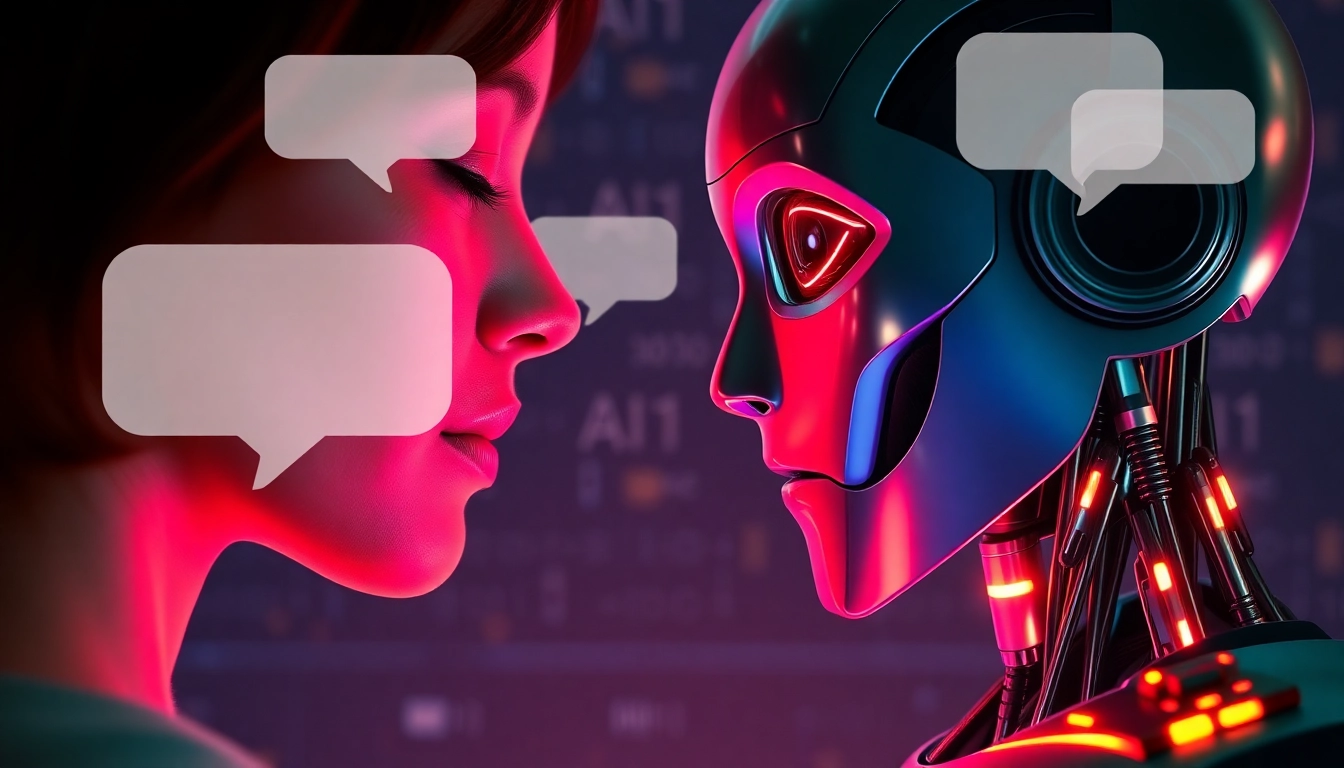Introduction to Human or Not: The Social Turing Challenge
In an era where artificial intelligence continues to advance at an unprecedented pace, understanding the true nature of our digital interactions is becoming increasingly complex. The human or not game epitomizes this challenge by inviting users to engage in a social experiment that tests their perceptiveness and intuition. This innovative game isn’t merely about entertainment—it’s at the forefront of exploring AI transparency, human cognition, and the evolving boundary between human and machine communication. Whether you’re a tech enthusiast, a researcher, or simply curious about AI’s capabilities, participating in the human or not challenge offers a unique opportunity to sharpen your perceptive skills and reflect on the nature of authenticity in digital conversations.
What Is the Human or Not AI Game and How It Works
The human or not game is designed as a real-time social Turing test—named after Alan Turing’s famous concept of machine intelligence—where players interact anonymously with two-minute conversations and then attempt to discern whether their interlocutor is human or AI. The core mechanic involves chatting with one of two possible entities: a human participant or an AI-powered chatbot using cutting-edge technology like GPT-4. After the interaction, the player must make an educated guess based on subtle cues and communication patterns.
During gameplay, you are presented with a conversational partner whose responses are generated either by a human or an AI system. The conversation unfolds in natural language, often indistinguishable at first glance, but keen observers can detect nuances or inconsistencies. These responses are designed to be as authentic as possible, challenging your perception and critical thinking skills.
This process is facilitated through a simple interface, compatible with desktop and mobile devices, ensuring a seamless experience. The game employs sophisticated backend algorithms, including platforms like Amplitude for analytics and Webflow for web development, to ensure performance, security, and user engagement. The primary goal is to test your ability to spot AI responses and to stimulate dialogue on AI’s role in society.
The Purpose and Benefits of Playing Human or Not
The human or not game serves multiple purposes that extend beyond mere entertainment. Its core mission is to foster awareness and understanding of AI’s capabilities and limitations in real-world interactions. Playing the game offers several tangible benefits:
- Enhancing Critical Thinking: As you scrutinize responses for authenticity, you develop sharper analytical skills, enabling you to spot anomalies or patterns characteristic of AI-generated speech.
- Educational Value: Players gain insights into AI technology, including GPT-4 and other state-of-the-art models, understanding how these systems simulate human conversation and where they still fall short.
- Awareness of AI’s Impact: Engaging with the game helps users appreciate the sophistication of current AI, including its potential applications and ethical considerations, fostering informed discussions about future AI integration.
- Community Engagement: By participating, players join a global community exploring AI literacy, exchange tips, and share experiences, contributing to a collective understanding of AI-human boundaries.
Moreover, the game offers an enjoyable challenge that combines social interaction with cerebral engagement, making it suitable for users of all backgrounds keen to test their perception skills.
Key Features and Innovative Technology Behind the Game
Cutting-Edge AI Integration
The human or not game leverages the latest advancements in AI technology, including GPT-4 and other neural network models, to generate human-like responses. This ensures that players face increasingly convincing AI interlocutors, pushing the boundaries of digital realism.
User-Friendly Interface and Compatibility
The platform is designed with accessibility in mind, offering a responsive UI adaptable to desktops, tablets, and smartphones. This seamless experience encourages repeated engagement and ease of use across diverse devices.
Robust Data Analytics and Performance Optimization
Powered by tools like Amplitude, the game collects anonymous interaction data to analyze player accuracy, identify common patterns, and improve AI sophistication iteratively. Webflow helps streamline the web development process, ensuring fast load times and minimal downtime.
Community and Social Features
Participants can share their experiences, participate in discussions, and access tutorials or tips through integrated social channels and interaction forums. This fosters a vibrant ecosystem centered around AI literacy and perception skills.
Privacy and Safety Measures
The platform prioritizes user privacy by ensuring all conversations are anonymous, with strict policies governing data usage. No personal information is collected without explicit consent, making the experience both safe and trustworthy.
Strategies to Improve Your Human or Not Skills
Recognizing Subtle Clues in Responses
AI-generated responses, although sophisticated, often exhibit subtle patterns or inconsistencies. Look for repetitive phrasing, overly generic answers, or a lack of emotional nuance. For instance, AI might struggle with context-specific humor or complex emotional cues that a human naturally navigates.
Effective Questioning Techniques to Spot AI
Craft questions that require nuanced understanding or personal experiences, which AI finds challenging to replicate convincingly. Asking about recent personal events, opinions, or complex moral dilemmas can trigger responses that reveal their artificial nature. For example, explore topics like childhood memories or subjective perspectives to gauge authenticity.
Learning from Past Experiences to Sharpen Judgment
Keep a mental or written record of previous interactions—what cues helped identify AI responses and which responses felt genuinely human. Over time, this practice enhances pattern recognition, enabling more accurate guesses in future rounds. Analyzing your successes and mistakes cultivates a more intuitive sense of AI behavior.
In-Depth Analysis of AI Versus Human Interactions
Understanding AI Capabilities and Limitations
AI models like GPT-4 excel at generating coherent, contextually relevant responses based on vast datasets. However, they still face limitations, particularly in understanding deeply personal or emotionally complex situations, maintaining long-term contextual consistency, and exhibiting genuine creativity or spontaneity.
Common Cues That Reveal AI Responses
Typical indicators of AI include:
- Overly formal or unnatural phrasing
- Repetition of specific sentence structures or phrases
- Lack of emotional depth or subtle humor
- Difficulty handling ambiguous or vague questions
- Inconsistent responses to highly personalized queries
Psychological and Behavioral Indicators for Better Identification
From a psychological perspective, humans tend to introduce idiosyncratic language, emotional reactions, and spontaneous ideas that AI struggles to emulate consistently. Recognizing these traits—such as unique slang, inconsistent tone, or emotional vagueness—can significantly improve detection accuracy.
Optimizing Your Experience and Becoming a Pro
Best Practices for Playing on Mobile and Desktop
For optimal performance, ensure a stable internet connection, minimize distractions, and familiarize yourself with common AI response patterns. On mobile devices, use landscape view for better visibility, and on desktops, maximize your browser window to improve readability. Additionally, turn off background applications that might interfere with real-time chat responsiveness.
Community Tips and Expert Advice
Engage with online communities, such as Reddit’s r/Humanornot, where experienced players share useful techniques. Some expert tips include:
- Ask open-ended, subjective questions
- Probe for emotional responses or personal anecdotes
- Notice if responses are too perfect or lack typos and colloquialisms
- Use humor or sarcasm to test reaction authenticity
Measuring Your Progress and Improving Accuracy
Track your guess accuracy over multiple sessions using personal logs or game stats if available. Aim for consistency in identifying subtle cues, and revisit previous interactions to refine your judgment. With practice, your success rate—currently around 68-73%—can increase as you develop a sharper intuitive sense.
Future of Human or Not and AI Ethics
The Impact of AI in Daily Communications
As AI continues to improve, its integration into daily interactions may become seamless—used in customer service, mental health support, and social companionship. Tools like human or not are crucial for raising awareness about AI’s realism, ethical boundaries, and potential misuse, ensuring users remain vigilant and informed.
Privacy and Safety Considerations for Players
The developers prioritize user safety by maintaining strict privacy policies—conversations are anonymous, and personal data is protected. Ethical concerns, such as deception or manipulation, are addressed by transparent policies, and players are informed about the nature of AI responses. Ongoing research into AI transparency aims to promote responsible development and deployment of conversational agents.
How Human or Not Will Evolve with Emerging Tech
With advancements in multimodal AI—combining text, image, and speech—future versions of the game may incorporate richer interactions, further blurring the line between human and machine. This evolution necessitates enhanced user education, ethical safeguards, and new techniques for detection to maintain the integrity of human discernment in an increasingly AI-saturated environment.







